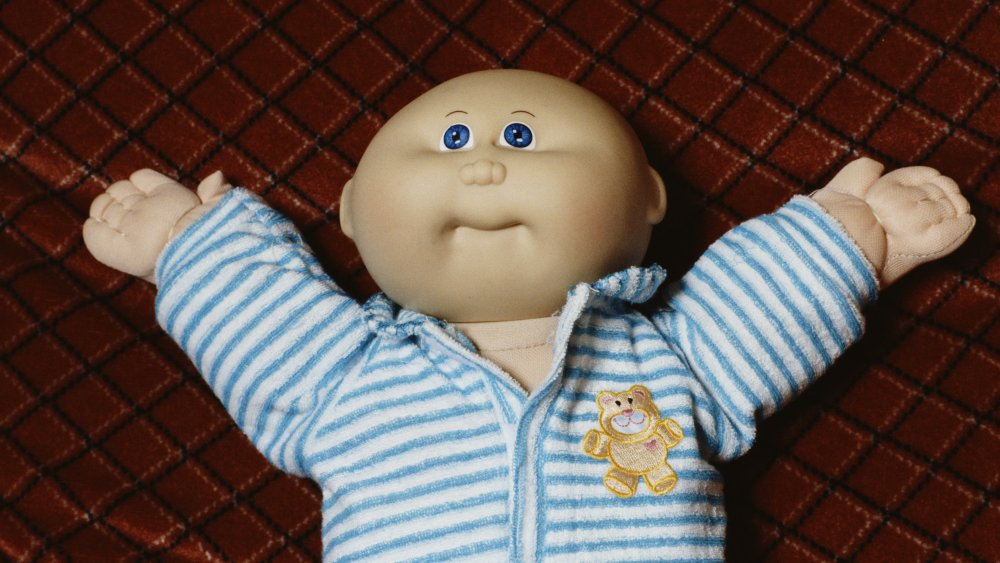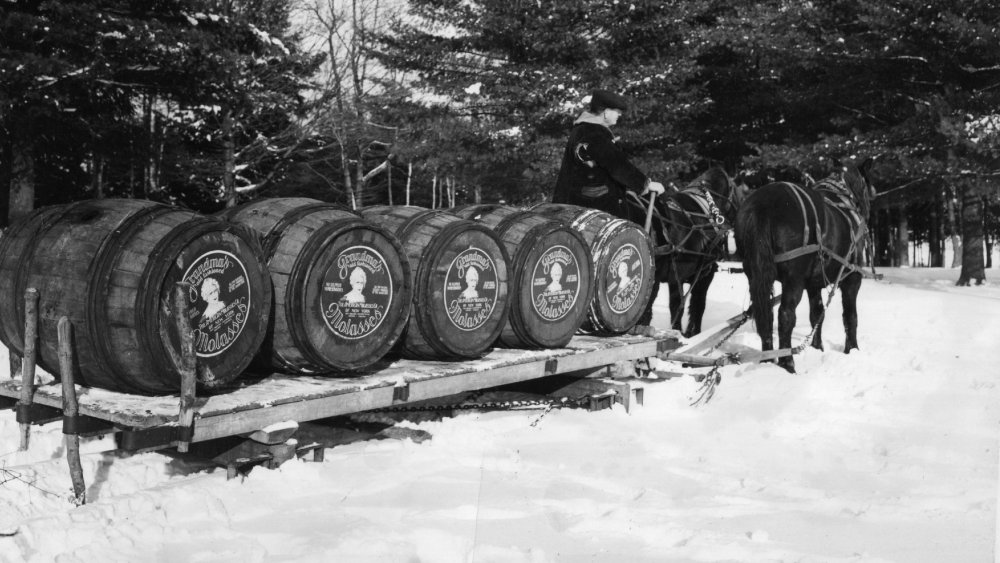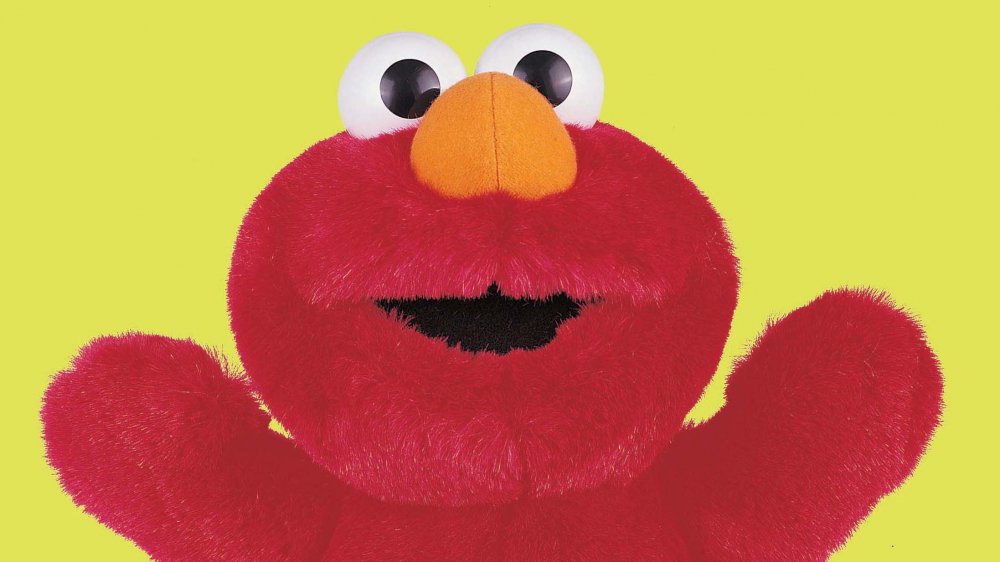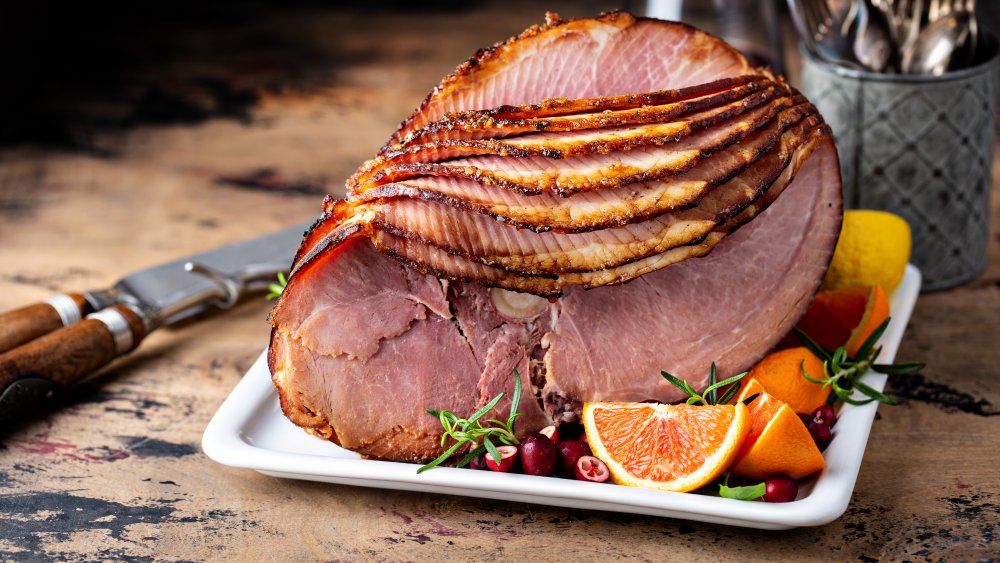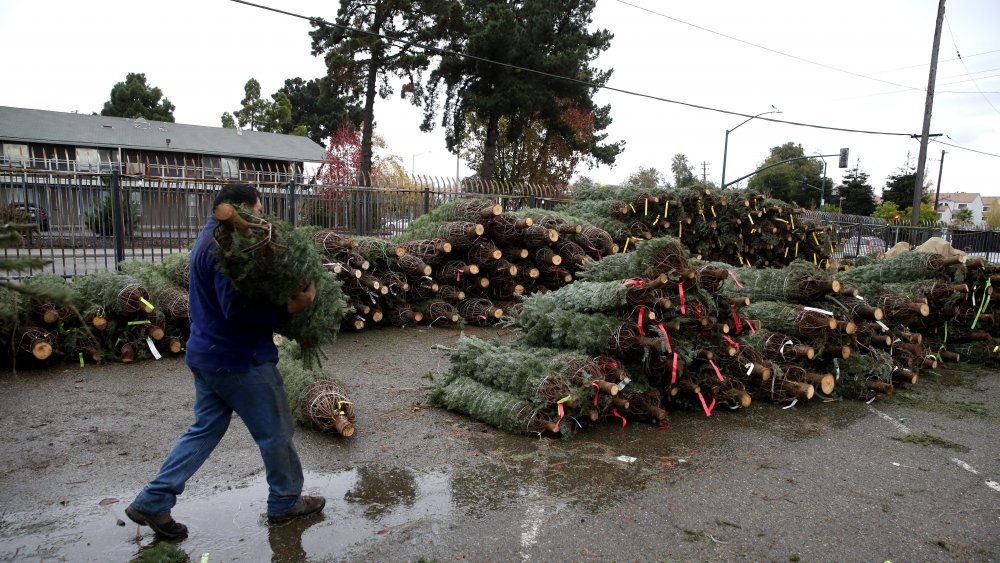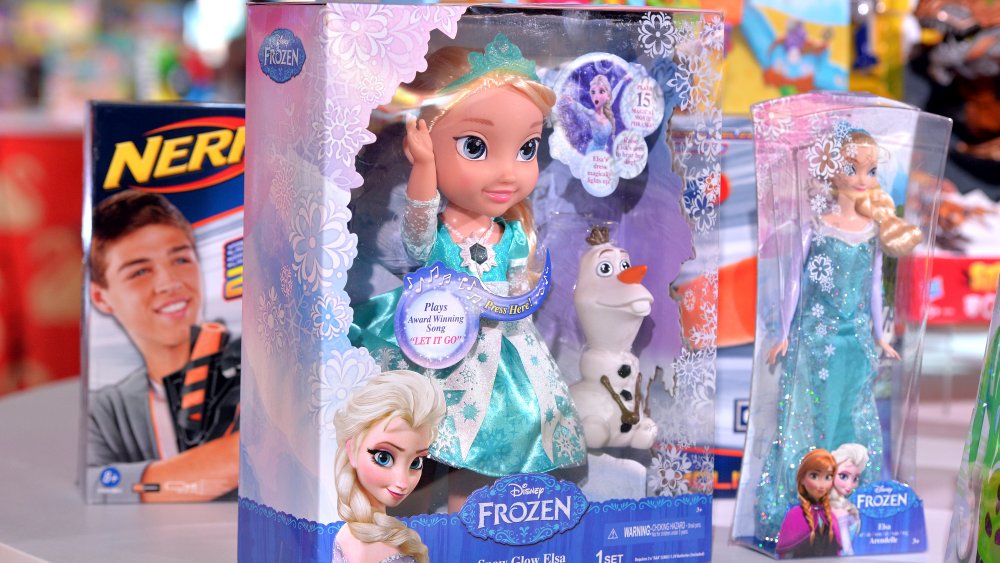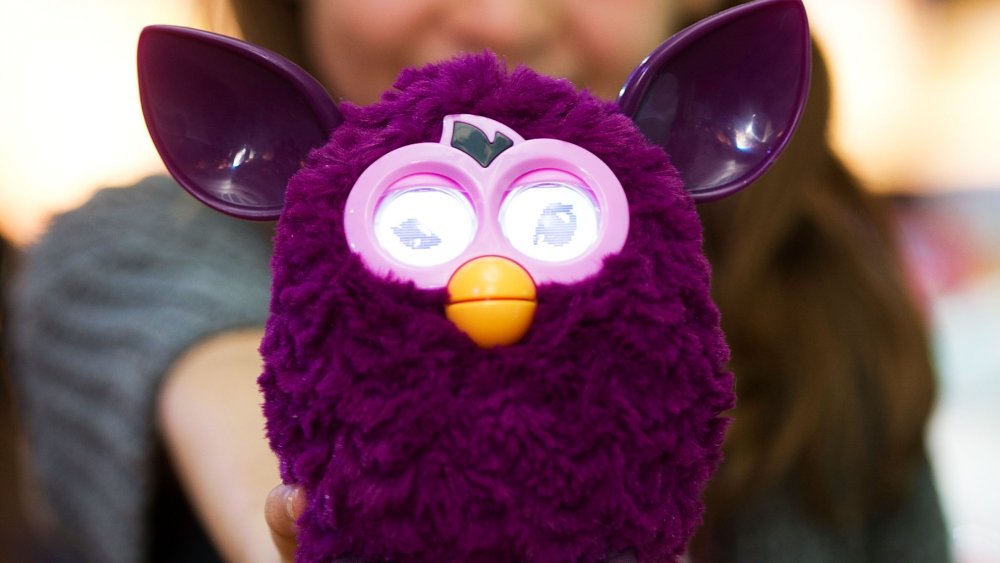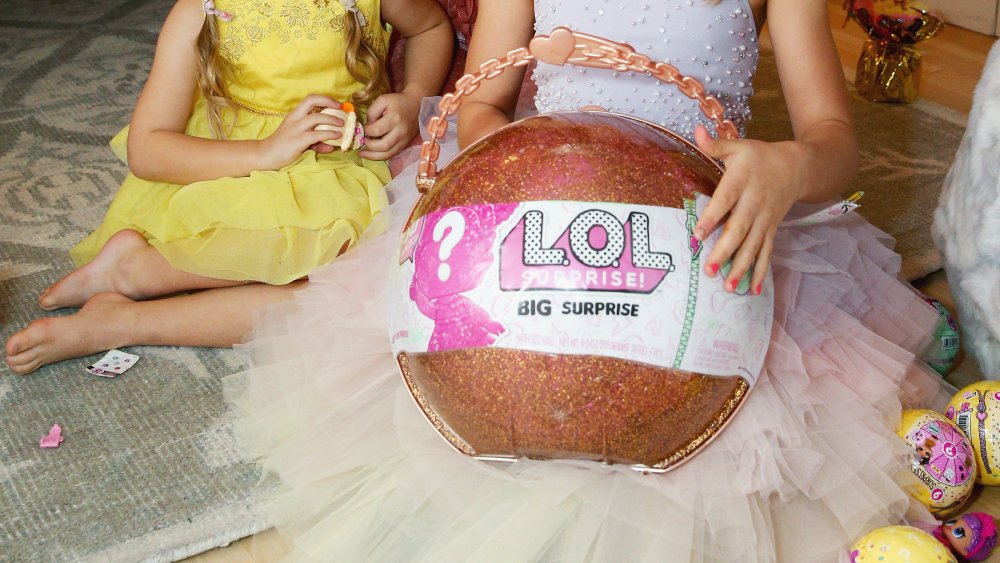The Worst Christmas Shortages In History
Christmas is a religious holiday at heart, but it's also a time of too many houseguests, too much food on the table, and too many presents under the tree. Throwing a huge party to flex on your plentiful supplies when the universe seems intent on freezing and starving you to death is baked into our genetic code.
So it's always a very sad thing when there are shortages that affect Christmas. Whether it's food or toys or even some of the traditional decorations, any time people have trouble tracking down specific items for Christmas it helps to ruin the joy and good cheer we're entitled to. Plus, in the modern world where everything is a click away and things can conceivably be delivered via drone within a few hours, not being able to obtain something is deeply psychologically disturbing.
Unfortunately, as this list of the worst Christmas shortages in history demonstrates, even our most sacred and enjoyable holiday is subject to market forces and simple bad luck. And while some of these shortages happened a long time ago, some are going on right now. Which means Christmas will never be immune to buzz-killing shortages.
The Norwegian butter crisis of 2011
Ah, butter. Some people say civilization began with the invention of the wheel, some might point to the development of language or agriculture—but as any true foodie will tell you, butter was when human beings hit their stride. Butter transforms something as boring as toast into a delicious treat, makes something already delicious like waffles into an incredible culinary experience, and is a staple in just about every baked treat worth mentioning.
So it's understandable the Norwegians kind of lost their minds a little bit back in 2011 when there was a major butter shortage. As The Guardian reports, the problem began in Sweden, which blamed a television chef who urged everyone to use more butter in their cooking. Then, as the shortage spread to Norway, mismanagement of supply coupled with rising demand left most supermarket shelves empty as the Christmas holiday approached. Bad weather affected cow grazing, which in turn led to lower milk production, making matters even worse.
Butter Madness soon kicked in as everyone in Norway imagined a Christmas without lussekatt buns and Christmas biscuits. Instructions for making your own butter appeared in magazines and newspapers, and crowds gathered to stake out supermarkets, rushing to grab sticks of butter before they could even be shelved. So next time someone from Scandinavia wants to tell you that they run their countries better than we do, remind them of the Butter Madness, because it was not a good look.
The Cabbage Patch Doll fiasco of 1983
When it comes to the "Must-Have Christmas Toy" panics, there's no more legendary story than that of the Cabbage Patch Doll, which sent parents into a violent frenzy in the fall and winter of 1983.
If you're too young to remember 1983 or the Cabbage Patch Dolls (which are still sold), Syracuse.com reports the basics. Georgia artist Xavier Roberts created the dolls, which were described as "so ugly, they're cute" in marketing. Each doll was (allegedly) unique, and came with "adoption" papers and a birth certificate. The new owner would fill out the paperwork and send it in, and receive an official adoption certificate in return. The dolls' manufacturer, Coleco, didn't think the toy would be particularly popular, and so produced only a modest number of the dolls for the 1983 holiday.
And then, the dolls became a sensation and every kid in America wanted one. Which meant every parent in America wanted one too. As ABC News reports, this led to what can only be described as riots: Parents would wait outside a store for shipments of the dolls to arrive, then storm in and fight each other to grab them before they sold out. Parents who didn't want to risk life and limb would have their extended family scouring the earth for dolls, and black markets soon emerged where you could pay $50 for a doll that usually sold for $21.
The New England Molasses Crisis of 1705
Winter in New England in the early 18th century was not a cheery time, mainly because the descendants of the Puritans who'd come over on the Mayflower didn't celebrate or approve of Christmas. It wasn't that they didn't honor Christ's birthday, it was more that they considered the usual celebrations to be gross and immoral.
As The New England Historical Society explains, folks in New England replaced Christmas with alternative holidays with less of a Roman Catholic flavor. There were holidays called Training Day (ominous) and Commencement Day (boring), and several Thanksgivings every year. Thanksgiving back then was a sort of omnibus celebration that would be announced to mark any sort of natural or secular event. These were often proclaimed as a sort of pseudo-Christmas since they couldn't have the real thing. And in November 1705, pseudo-Christmas was ruined by a shortage of molasses.
It had been an unusually cold winter, and the rivers had frozen. Molasses was used in everything because it was cheaper than sugar, but it had to be imported from the West Indies by boat—and with frozen rivers none could make it north. This was considered so dire that the town of Colchester, Connecticut just gave up and canceled the holiday entirely.
The Hawaiian toilet paper shortage of 1971
If you thought the struggle to find toilet paper during the global pandemic was bad, you should know that in 1971 a lack of toilet paper put a real crimp in the Hawaiian Christmas season. It's not hard to imagine how a shortage of that particular item might make life a tad uncomfortable, but when you consider Hawaii is a series of islands that must rely on imports for much of their food and other items you can see how it quickly grew into a crisis.
As The Washington Post reports, this was a man-made disaster. On the mainland, the International Longshore and Warehouse Union went on strike, effectively shutting down every dock on the West Coast. Shipments of just about everything stopped going to Hawaii, but toilet paper quickly became White Gold on the islands, a sort of pseudo-currency. Sold out in every store, restaurants and bars had to lock up their supplies and issue patrons a ration of six sheets every time they had to use the facilities. Instead of cash, radio stations began giving away toilet paper. People gave toilet paper as gifts.
The strike lasted for months. President Nixon got involved and the dockworkers went back to work in late October, but the damage had already been done: By the time Christmas rolled around, Hawaii was a post-apocalyptic scene of people guarding their toilet paper supplies with their lives, which isn't exactly the Christmas spirit.
The Tickle Me Elmo Crisis of 1996
In the hallowed tradition of toys that almost break society and cause the collapse of civilization, Tickle Me Elmo is right up there. These days, Elmo is a staple of Sesame Street, a red puppet who talks about himself in the third person in a high-pitched voice. But back in the late 1990s, a shortage of dolls based on the Muppet threatened to make Christmas as un-merry as possible.
Although introduced in the late 1970s, Elmo didn't become popular until the late 1980s when his sweet-natured personality solidified. Even so, as Newsday notes, no one was prepared for the intense demand for the Tickle Me Elmo doll in 1996. The doll, which would laugh hysterically when you squeezed its belly, wasn't an instant hit. As Uproxx notes, early sales were strong, but not mania-level. The key was putting Elmo on The Rosie O'Donnell Show, a move inspired by an appearance by the Cabbage Patch Dolls on The Today Show with Jane Pauley back in 1983.
That launched Elmo into the stratosphere—and inspired near-riot conditions. As The New York Times reports, parents went into a frenzy to get their hands on the toy for the holiday season, descending on stores and waiting for deliveries—then rushing terrified employees. Since no one had expected the frenzy, there simply weren't enough dolls being made. While production was increased, it wasn't in time to ensure every kid got one for Christmas.
The worldwide pork shortage of 2019
There's a short list of things that get the "Christmas" modifier. Christmas presents. Christmas tree. And right there on the list is Christmas ham, a popular and enduring traditional part of the holiday feast. Pork in general is pretty popular around the world when it comes to the holidays—in England they get pretty excited about pigs in blankets around Christmas time, for example. So when pork became pretty hard to come by in 2019, Christmas started to look a little endangered. As The Washington Post reports, about 15 percent of Americans eat ham on Thanksgiving and Christmas, consuming nearly 25 million pounds of pork. So this shortage was a big deal.
There were two main problems. On the one hand, swine fever struck China's pork industry, killing an astounding 50 percent of the pigs there. On the other, the U.S. had already placed heavy tariffs on Chinese pork as a way to boost domestic producers, which meant the prices skyrocketed. At the same time, local labor problems exacerbated the problem. As FarmingUK reports, in England most of the labor used in pork farming had traditionally come from the European Union, but after Brexit many places struggled to find enough workers. That put a further strain on pork supplies and threatened a ham-less Christmas.
In the end, the U.S. had enough pork reserves—which is a thing that exists—to carry us through, and the pig population recovered—but it was a near thing.
The Christmas tree shortage of 2020
If you don't celebrate Christmas, or if you've been in the habit of putting up a fake tree, you might not know it, but Christmas trees are hard to come by in 2020.
As Today reports, the Christmas tree crisis actually started more than a decade ago. Global warming leading to unusually hot weather hurt tree growers. Farmers overplanted when trees were expensive in the earlier 21st century, then the global recession of 2008 forced many to cut back on their investments, growing fewer trees. Then in 2019 there was simply too much rain in some areas like Missouri, causing many tree growers to see failed crops. That year Americans bought 27.4 million Christmas trees for their holiday celebrations. Growers are expected to miss that mark by about 1.5 million trees in 2020, which means there will be 1.5 million people who simply won't be able to find a tree for their home this holiday season.
And there's reason to believe this won't be the last Christmas affected by this shortage. As The Atlantic notes, it can take up to 12 years to grow a tree to sufficient size for use as a Christmas tree, so the industry can't just quickly adjust for miscalculations. This is one of those moments where you have to be glad you live in the future, where plastic and aluminum trees are available.
The Brussels sprouts shortage of 2016
There are two kinds of people in the world: Those who hear about a Brussels sprouts shortage and shrug, thinking "Who cares?" and those who hear about a Brussels sprouts shortage and think, "Well, I guess Christmas is canceled." This divide is especially vibrant in England. As BBC America explains, the humble Brussels sprout is part of the traditional Christmas feast in that country, but its status as a healthy, good-for-you food leads many to resist its charms. A holiday feast is supposed to be indulgence, after all—not topping off your fiber and vitamin needs.
That feud became a moot point in 2016, however, when a worldwide shortage of Brussels sprouts threatened to remove them from disappointing holiday menus everywhere. As Vice reports, the culprit was the Diamondback Moth, which apparently thinks sprouts (as well as cabbages and cauliflower—basically, it's a bug that eats all the healthy stuff we hate). It arrived in England from Europe earlier in the year and ate its way through the sprouts crops with insecticide-resistant relish. The weather also didn't cooperate, and some farms saw their entire crop destroyed.
That meant a Christmas without Brussels sprouts for many. Whether that was a Christmas miracle or a Christmas disaster obviously depends on the individual's personal feelings towards the tiny cabbage-like vegetable, of course.
The great Elsa doll shortage of 2014
Remember the halcyon days of 2013? It was when a little movie called Frozen hit theaters and became a national obsession for little kids everywhere. That means it was just a few years ago when you couldn't escape a certain song. You know the song. You could sing it right now, and back in 2014 when Frozen was a huge phenomenon you heard that song in your sleep and woke up screaming.
And whenever kids are that passionate and excited about a toy, there's going to be some really strange behavior on the part of the parents. As The New York Post reports, in 2014 Frozen mania hit such a high note that Elsa dolls and other merchandise tied to the film were in really short supply. This resulted in people paying $1,200 for a single doll—and some violence, with one Disney Store employee in New York reporting fistfights in front of crying kids.
And as with any scarce item, some folks tried to profit off the problem at the cost of children's tears everywhere. With dolls selling for $1,000 on eBay, people tried to buy up as many as they could in order to make a profit—which just made the dolls even harder to find. As People reports, this led to stores putting strict limits on how many Frozen items parents could buy. Which meant a lot of sad, unhappy kids on Christmas Day.
The eggnog disaster of 2016
Feelings on eggnog run hot. For some, it's a too-sweet, viscous dollop of horror. For others, it isn't Christmas without a few glasses of the spiced, creamy stuff. But here's a surprising fact most people don't know—and a fact that surprised the heck out of people in 2016: Some people drink eggnog all year 'round, which caused a problem in 2016.
Consumerist reports sales in 2016 were brisk—up by about 60 percent. One dairy farm reported it could have easily sold 25 percent more eggnog than it made, which is the sort of sad trombone realization businesses hate. But it might not have been just general enthusiasm for the 'nog that caused the shortage. CNBC reported one theory about the lack of eggnog was the burgeoning craze for seasonal flavors like pumpkin spice. After making bank on pumpkin spice-flavored everything, sales tend to drop off as winter arrives. Eggnog-flavored stuff is seen as a way of keeping the good times rolling, especially as Christmas arrives.
Whatever the reason, 2016 was almost the Christmas without eggnog, and it was definitely the Christmas without as much eggnog. Whether or not that was a nightmare scenario or a blessing in disguise depends entirely on your tolerance for egg-based beverages.
The Great Furby Shortage of 1998
Furby was introduced in 1998, and its popularity remains a mystery science has not been able to solve. Sometimes described as "hamster-ish" or possibly a hamster crossed with an owl in a horrifyingly unethical science experiment, Furby is essentially a tiny robot. It has some limited facial expressions, and starts off speaking a made-up language known as Furbish (we are not making this up). Slowly, it will begin to use some English words as the toy mimics the process of learning the language.
As The Journal Times reports, Furby quickly became a real fad. Stores reported hundreds of parents lining up before they opened in order to jostle and push for the chance at grabbing one. This was great for Hasbro, the toy's manufacturer—Bustle reports 40 million of the toys had been sold by 2000—but it was bad news for exhausted parents in 1998 when the Great Furby Shortage threatened to turn Christmas into a nightmare.
The Furby fad died out, of course—but not forever. As The Guardian notes, in 2012 the Furby (which had almost disappeared entirely from store shelves and the public consciousness) was rebooted and relaunched, and right on cue another shortage threatened to ruin Christmas. Which begs the question of whether Furby should be shut down for the good of everyone.
The 2020 L.O.L. Surprise shortage
If you've never heard of L.O.L. Surprise!, you probably don't have young children. As The Atlantic notes, the L.O.L. Surprise! toy line debuted in 2016, and it's easy to see why kids love them: Vibing off the popular "unboxing" videos found online, the L.O.L. Surprise! comes as a colorful, glittery suitcase that contains a mystery. In other words, you don't know what you get until you open them up. More than a billion have been sold since their introduction.
Part of the fun for kids is the complexity and depth of the toys, especially the newer L.O.L. Bigger Surprise. The box contains not just a big-eyed doll, but also a random selection of accessories for the doll—and a lot of them. As The New York Times notes, there's a lot of stuff—it can take up to an hour to fully unbox everything and catalog your haul.
Unfortunately, a global pandemic and the subsequent economic turmoil meant L.O.L. Surprise! dolls are expected to be difficult to find for Christmas 2020. As CNN reports, the toy's manufacturer, MGA Entertainment, makes everything in China, and China saw a huge amount of disruption due to the Covid-19 outbreak, meaning they lost too much time to make up the production numbers. That may mean a sad Christmas for many (both kids and parents).


